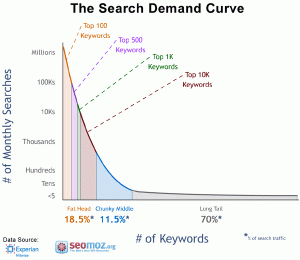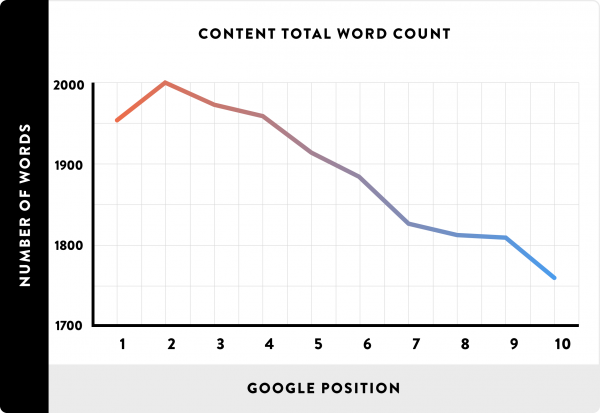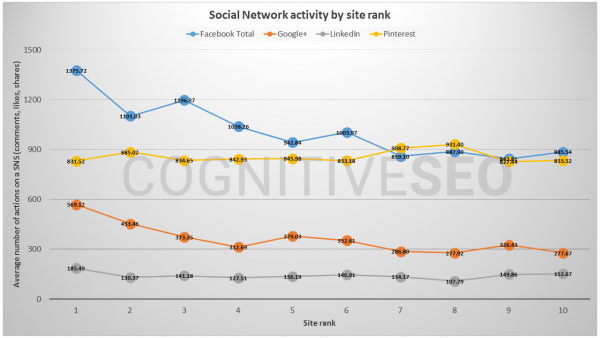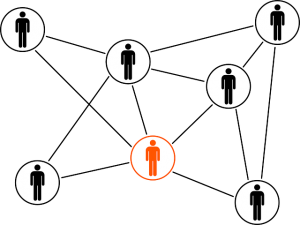To kickstart your journey on search engine optimization, SEO, or affiliate marketing, your first task will always be how to rank a keyword on Google and other search engines?
Many beginners perceive that SEO is about producing valuable content and pray hard that one of your content sticks on the first page of Google. WRONG!
Like any other task, you will need to plan before you get started. Planning is a crucial stage as it may
So What Are Keywords?
As quoted by Moz, the SEO Guru website,
Keywords are ideas and topics that define what your content is about. In terms of SEO, they’re the words and phrases that searchers enter into search engines, also called “search queries.”
Imagine yourselves as a search engine user. You are intent to buy a digital camera and were doing research online. You put in “best digital camera” in the Google search bar.
That is KEYWORD!
Is Keyword Important?
Hell Yeah! Search engines nowadays are smart enough to detect what keyword a page is targetting.
They have a complicated algorithm with different metrics to determine which page stays at the top of the list.
The first part of SEO is to help search engines identify the keyword that we are targetting on our post or article. If you screw it, your post will never be heard or read by anyone.
Let’s deep dive into the 5 simple steps of ranking your keyword on Google.
Step 1: Research Your Keyword THOROUGHLY
I couldn’t stress more on this. I mentioned it countless times whenever doing SEO. The first and foremost thing is the need to understand the targeted keyword thoroughly.
Understanding your keyword is not about knowing how much search volume per month this keyword has. There is a lot more to do when you research a keyword.
You can steal my 7 simple ways of researching for a keyword.
- Grammatically Correct – Ensure that the keyword that you wanted to rank is grammatically correct and makes sense when you read it. Search engines are smart, and they might autocorrect the error and shows relevant topic on similar keywords that make sense.
- Searcher’s Intention – Consider the searchers’ intent when they punch in the keyword in Google. Put yourselves in the searcher’s shoe. Produce the content that is intended to read by the user and not to please the search engines.
- Use Long-Tail Keywords – Traditionally, shorter keywords have less visibility on their intent compare to long keywords, AKA Long Tail Keywords. It is easy to satisfy a particular group of people rather than satisfying everyone.

- Decent Search Volume – Targeting keywords with a monthly search volume of at least 150 should be the sweet spot to get yourselves going. The higher the number, the higher the competition is.
- Keyword Competitiveness – Use tools like LongTailPro or Ubersuggest + Moz ToolBar to understand the keyword’s competitiveness that you wanted to rank.
- Understand Your Competitor – Aware of who you are competing with? Not to discourage you, it will take years and massive effort to outrank the giants in your industry. Look for easy wins, although the search volume is low.
- Make A Different – Virtually plan on what content to produce that is different from your competitors. Don’t copy; consolidate their findings and produce a “super post” greater than the top 10 search results.
Notice that I put search volume at the 4th point. It is not that important as the first 3 points. Search volume is just an estimation of how many searches are they in the past.
Key Takeaway: Aim for easy wins long-tail keywords with a clear searcher’s intent. Don’t focus too much on search volume and spend time creating a unique piece of content to solve your reader’s problem.
Step 2: Write a KickAss Article
Content is King! While most people hate to produce content, I’m sorry to tell you that it is the ONLY WAY to rank a keyword in search engines.
Not only that, but the originality of the content is also an important factor. Duplicate and thin contents are 99.9% likely to hurt the overall ranking of your website.
The search engine algorithm is complicated, smart and they can detect plagiarism and useless content.
So how do you know which content search engine will rank?
- Write For Human – Articles are read by humans, not for search engines. If you are trying to please the search engines, you will never sustain in the number 1 position for long.
- Deep Dive Into It – Create contents containing all the information needed by the readers, which they don’t need any other resources. Never left the fruit hanging on the tree, or else someone will take it from you someday.
- Long-Form Content – Rich content is one of the key elements. Studies show by Backlinko below that the sweet spot for article wording is about ~2000 words. Longer content doesn’t translate to a higher ranking.

- Content Consolidation – Make use of your competitors and consolidate the great things that they suggest individually into your very own piece of content.
- Be Creative – Repurpose the content into images, videos, podcasts, or even summary tables. People tend to be more attracted to visual effects.
- Create Readable Content – Make your article more readable by breaking it down into smaller paragraphs, use bullet points, utilize headers, and include pictures & videos.
Writing your first blog post might be timing consuming and hard. Once you have your own style of writing or a system, it will speed up the process or outsource it to external writers.
Key Takeaway: Write your article based on solving people’s problems instead of targeting to rank on search engines. Readers are satisfied; search engines will rank your page in no time.
Step 3: On-Page SEO
On-Page SEO, where the optimization is done on your page of interest, made search engines aware of your article.

We put it in the third step because you shouldn’t emphasize SEO heavily while creating your content. This is to avoid keyword stuffing and focus more on user experience and readability.
Before you hit the publish button, be sure that you have checked all the items below.
- URL Optimize – Make sure that your URL contains the keyword that you intend to rank.
- Meta Title and Description – These are the title and description that is shown on search results. Your keyword should be in there. Use the free All-in-One SEO plugin to help you with this.
- Keyword In First 100 Words – Based on the experience from SEO guru, drop your keyword NATURALLY on the first 100 words.
- Header Tags – H1, H2 tags are used to segment the content for readability and believe in affecting SEO.
- Mobile Responsive – Based on studies from Stone Temple, 63% of the traffic comes from mobile devices. Google has started its mobile-first indexing.
- Image Optimisation – Search engines can’t process images and rely on “ALT text” to understand the included picture.
- Insert Outbound Links – Linking to a relevant website helps Google to identify the topic of your article.
- Insert Internal Links – Interlinking other articles of yours will help Google understand more about your article.
- Sprinkle LSI Keywords – Stands for Latent Semantic Indexing are keywords that are similar in meaning to your main keyword. This can avoid keyword stuffing.
- Site Speed – Website speed is crucial not just the ranking of your page; it also affects the user experience with slow loading speed.
Brian Dean, the founder of Backlinko, has an excellent infographic about on-page SEO, which explains why we should optimize in that way.
Key Takeaway: On-Page SEO enables Google and other search engines to understand more about your article, which can help you rank your page tremendously.
Step 4: Social Signals
Social signals are defined as comments, likes, and shares from social media platforms such as Facebook, Twitter, Pinterest, Reddit, Youtube, etc.
While there is no solid proof that social signals directly impact ranking, observation from CognitiveSEO shows that the social shares are higher in the number 1 position of Google.

Sharing your website on social media increases the traffic coming to your website.
This increases the dwell time of your page, which is one of the ranking factors for Google and other search engines.
Dwell time is the number of times where a user spends on your page. High dwell time sends a signal to Google that the page has valuable information that attracts readers to the site.
How do you increase the dwell time of your site?
- Video: People tend to spend more time on video rather than reading content.
- Infographic: Infographic makes reading content more interesting and informative.
The two graphical approaches tend to be more attractive than wordy content. In addition, it is easy to share around on social media and catch the attention of readers.
Key Takeaway: Build your social media profile will not harm your overall performance of your site. While there is no proof that it helps, you can diversify your audience acquisition through different means.
Step 5: Link Building
In the industry, backlinks are one of the most powerful ranking factors in all search engines.

While the main focus is still content creation, many marketers have started to engage “black hat” techniques such as Public Blog Network(PBN) to help link-building strategy.
PBNs are many blog networks that marketers created to trick search engines that a particular page has a lot of backlinks. Instead, they are all artificial backlinks.
Since then, Google is constantly refining their algorithm with the release of Panda and Penguins update to clean up thin, duplicated contents and those using PBNs.
By nature, as a beginner, backlinks are hard to acquire. You will need to create excellent content, pictures, video to get backlinks.
Backlinks should be coming from relevant sites from the same industries or relevant industries.
It doesn’t make sense to have a backlink in the pet industries while your website is about fitness trackers. Relevancy is the key!
Here are some of the “white hat” techniques to acquire backlinks.
- Guest Post: You are creating content on behalf of the site owner. In return, you will have a link back to your site.
- Broken Links: Aged sites might have broken links where the website that they are linking to no longer exists. You can request them to link to the similar content that you created.
- Skyscraper Technique: Creating much more powerful content than your competitors and reach out to people that link to your competitors, saying that you have greater and updated content. Check out this technique in more detail.
- Guestographic: Create shareable infographics and reach out to people with similar content willing to share this content with their users. Again, Brain Dean from Backlinko uses this technique and has tremendous success.
Acquiring backlinks is the hardest part for SEO if you are pursuing the white hat methods. It takes time to build up a relationship with people in the same industry, and it is worthwhile to invest from the start.
Key Takeaway: Backlink is an important ranking factor and makes sure you have a decent amount of content before outreach for backlinks. Focus only on the white hat technique as the search engine updates will have little or no negative impact on your site ranking.
Conclusion
You might not be able to absorb that much information today. Keep in mind the following when you are trying to rank a keyword:
- Keyword research dictates whether the path on ranking your page is easy or hard. It will be rewarding to rank on a competitive keyword, but it takes tremendous effort and hard work to outrank pages that have been there for years.
- CONTENT is always the main focus when ranking on search engines.
- Do not try to produce THE PERFECT content. You can always revisit and recreate a greater content as you acquire more knowledge in the future.
- Start your link-building strategy after you have a great website, site architecture, and excellent content.
- Use the white hat technique for link building to avoid being penalized by Google in the future.
I hope you have learned something and never stop practicing and connect with people when you just get started.
Leave a comment below if you have any questions or doubts.